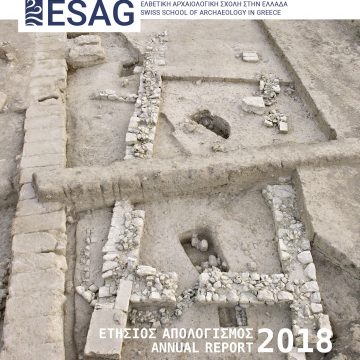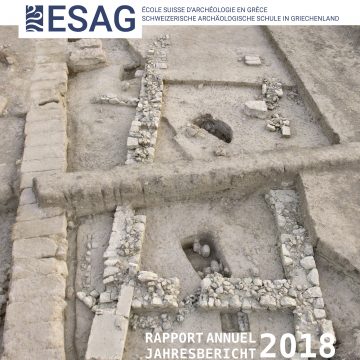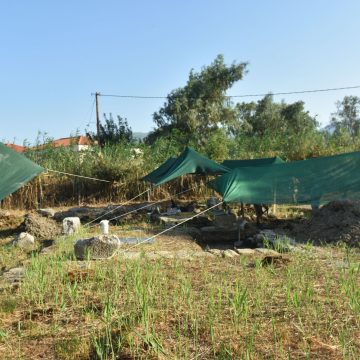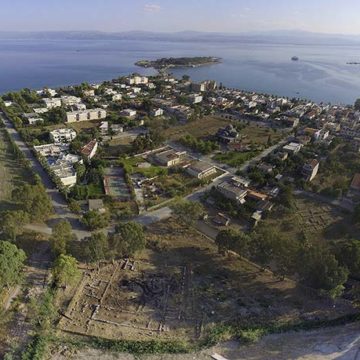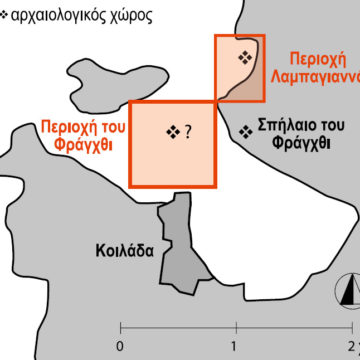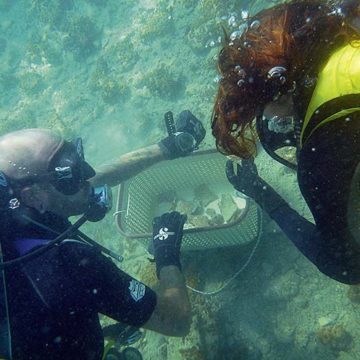Fieldwork 2018
Excavations in the Artemision of Amarynthos (Euboea)
The excavations in the Artemision of Amarynthos are a collaborative project between the Swiss School of Archaeology and the Ephorate of Antiquities of Euboea. The objective of the 2018 field season was twofold: to explore the core of the sanctuary and the pre-Classical phases. Excavation yielded evidence of the site’s long history with remains from the early first millennium BC to the Byzantine period. Trenches opened around the modern house in the center of the excavation site revealed massive foundations of a large podium, perhaps for an altar, as well as numerous offerings, in particular a bronze quiver no doubt from a statuette of Artemis.
The northern wing of the Eastern stoa dated to the last quarter of the 4th c. BC was uncovered, as well as the extensive remains of a monumental Archaic building discovered in 2012. Built in the early 7th c. BC, it is 24 m long and was accessed from the north through a porch with antae. The remains of an 8th c. BC apsidal building were discovered beneath its foundations.
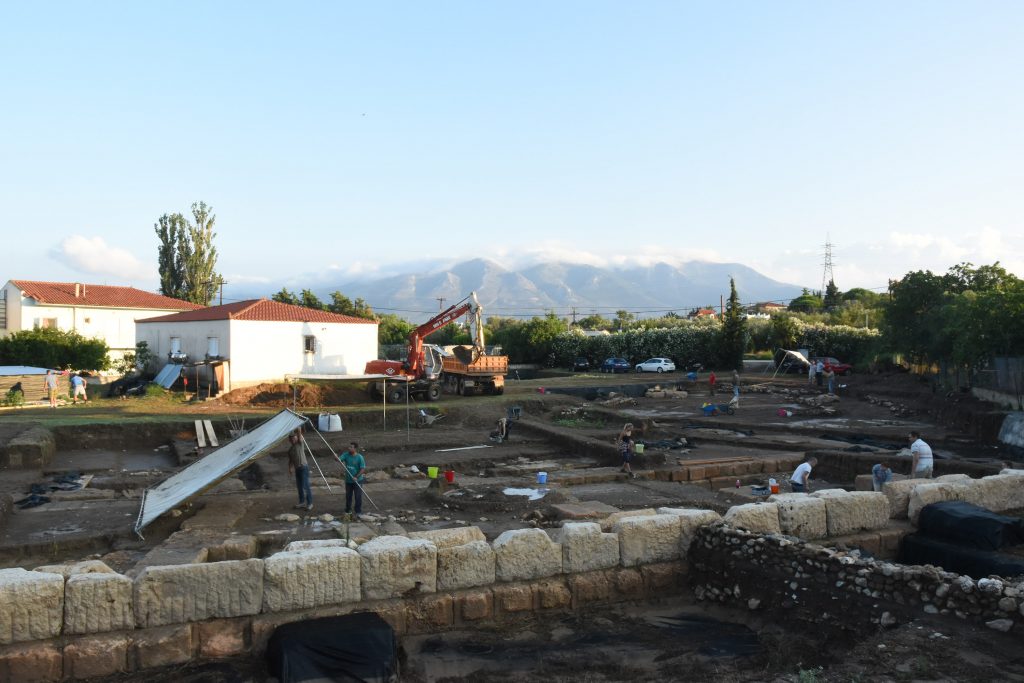
Amarynthos
Excavations in the South Palestra of Eretria (Euboea)
After the 2015–2017 excavations in the Gymnasium, a second palaestra located in the south-eastern part of the city close to the harbour was investigated. Exploratory trenches were opened to clarify the plan and construction phases of the monument in order to understand the relationship between this palaestra and the gymnasium. Evidence shows that the first phase of the building dates back to the Classical period (5th c. BC), quite an early chronology for this type of structure.
The north-western part of the complex was occupied by a small cult space devoted to Eileithyia. Excavations under the foundations of the northern wall uncovered a votive deposit of some 100 miniature cotylai, which suggests that the sanctuary was established in the last quarter of the 4th c. BC or the first decades of the 3rd c. BC.
Underwater excavation at Kiladha (Argolid)
The Bay of Kiladha project aims at exploring the archaeological remains in a small cove in the South Argolid. The project, directed by Despina Koutsoumba (Ephorate of Underwater Antiquities) and Julien Beck (University of Geneva), is a collaboration between the Ephorate of Underwater Antiquities and the Swiss School of Archaeology in Greece, under the supervision of their respective directors, Aggeliki Simosi and Karl Reber.
Since 2014, a team of Swiss and Greek archaeologists have focused their attention on a submerged Early Bronze Age site discovered at Lambayanna. After trial trenches in 2016 and 2017, the site was surveyed in 2018 using topographical and geophysical methods. The earliest layers are associated with numerous murex shells. Some shells are broken in a specific way, which might provide some of the earliest evidence for the extraction of purple color. The field season included public presentations and summer schools, concerning experimental archaeology in particular.
